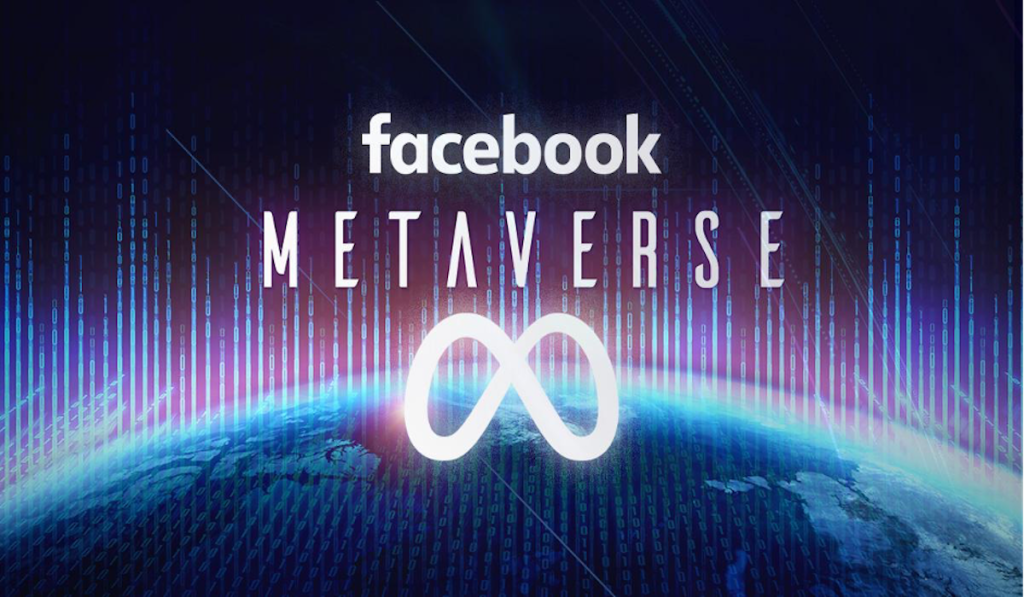In 2016, it seemed like virtual reality was the next big thing. Facebook dove straight into this sphere by acquiring the company Oculus for $2.3 billion in cash and stocks and accelerated the development of the first consumer version of the Oculus Rift headset. They also formed a partnership with Samsung Electronics that helped them target smartphone users. However, VR technology did not prove to be a massive hit with gamers and slightly drifted away from the public’s consciousness.
One niche sector where it got utilized was the development of open-world games known as metaverses. These began to populate the internet post-2017. These virtual 3D worlds are online platforms that incorporate virtual and augmented reality technology, hoping to foster social connections between their users, who are free to explore their landscapes, interact, and transact with others.
In October 2021, Mark Zuckerberg, the CEO of Facebook, announced that the world’s most popular social network would rebrand itself into Meta. That Facebook will adopt the metaverse concept and elevate it to a new level. There have been rumors of the company taking this approach as far back as 2019, and many that know Facebook’s inner workings well claim that Zuckerberg informed his employees of the change in early-June 2021.
How Does a Metaverse Work?
So far, most metaverses have been 3D environments that feature crude graphics whose landscapes users can traverse via an avatar. Nevertheless, a more vital aspect of these platforms is that they have self-sustaining economies that run on the Ethereum blockchain, thanks to its ERC-20 standard. Their ERC-20 tokens act as virtual counterparts to fiat money. That means that these metaverses can facilitate monetary transactions in a way similar to those that are available in the physical world.
Essentially, a metaverse is an iteration of the internet that offers simulated experiences that somewhat mimic our physical existence with the help of virtual and augmented reality technology. It differs from the traditional World Wide Web because these societies implement a decentralized governance system, which will not be the case if a sole corporate entity is in charge.
Facebook has a history of dabbling in cryptos before, as it experimented with its coin named Libra in 2019, assigning fifty engineers to work on the project. Sadly, the project remained in limbo, and Libra was renamed in December 2021 as Diem. Since metaverses without question get linked with cryptocurrencies, it is safe to assume that Facebook’s world will have a Diem-fueled economy. Alternatively, the company may introduce a novel coin.
What Is Possible in a Metaverse?
Although Facebook/Meta has not released many details regarding their metaverse outside of a video promo featuring Zuckerberg and his glossy avatar, in-depth information about the project has been scant. If people go by what is in the promo and what is available in other similar virtual shared spaces, then the possibilities should be endless.
Most of the public is likely unaware, but there is a virtual real estate boom going on, with people purchasing plots of land in multiple metaverses, which they use or sell, for the construction of digital buildings that act as homes to a wide array of businesses. People run nightclubs, museums, taverns, and more in these computerized expanses. Atari and a few others operate token-based gaming establishments, as multiple online casino operators are eager to test their live dealer formats in a VR environment. Furthermore, all these establishments have employees who get paid monthly wages in cryptos. Therefore, there are few differences between current-day metaverses and the VR game in Ernes Cline’s novel Ready Player One and the Steven Spielberg movie bearing that same name.
In August 2022, the Florida-based Optima Classical Academy launched its virtual school, where pupils can follow live VR sessions that will provide educational content. The school spruces up their classrooms by overlaying visuals of Ancient Rome and the Oval Office over them, adding a higher sense of interactivity to the learning process. So, it should come as no surprise if metaverse classrooms become a thing soon.
Active Non-Facebook Metaverses
Decentraland is by far the most popular metaverse going today. It opened to the public in February 2020, after being in development for five years and following a 2017 initial coin offering that raised $26 million. MANA is Decentraland’s native fungible token, its money, and this platform has an active monthly user pool of around 300,000.
Decentraland’s main competitors are Axie Infinity, Somnium Space, and the SandBox. They implement almost identical concepts, but each one features its unique twist. For example, Axie Infinity revolves around the breeding and battling of Pokemon-inspired creatures. The SandBox has a Minecraft-like vibe, and Somnium Space boasts superior graphics compared to its rivals.
For more gambling news and reviews, visit OUSC.

